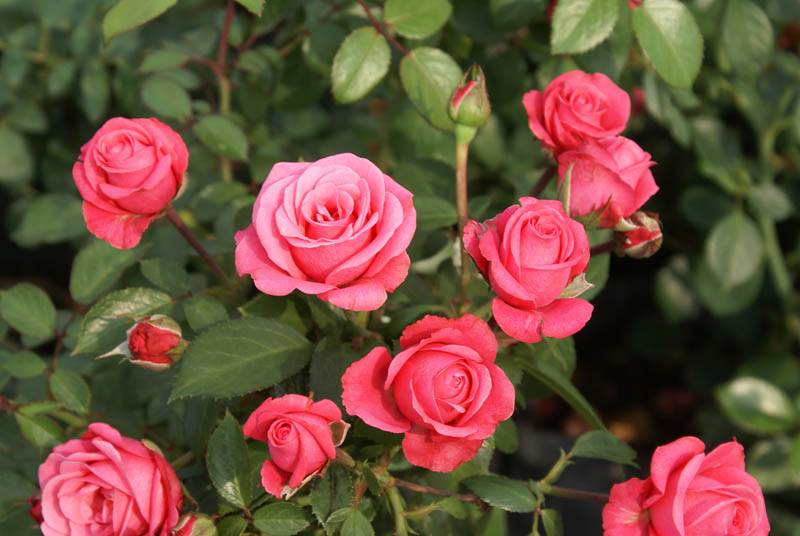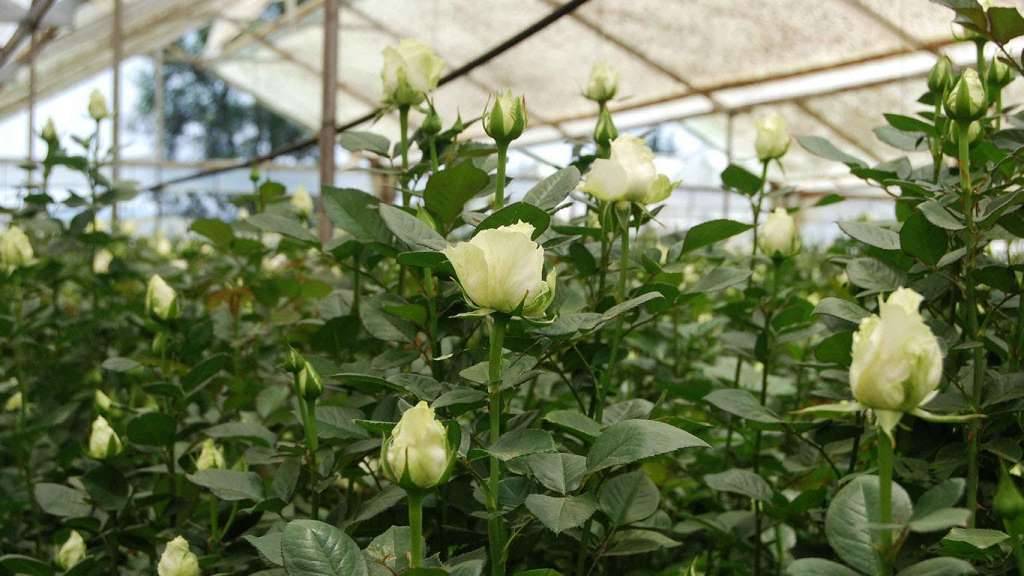
Rose cultivation should be focused on the selection of the right variety of roses. Rose flower has a market both at the national and international level as it is being used for various purposes like in marriages, parties, funerals, or any function in the form of bouquets or cut flowers.
They are also used for making rose water, gulkand, and rose oil. Major rose to cultivate states are West Bengal, Tamil Nadu, Maharashtra, and Karnataka.
Rose plants are divided by classification of flowers;
Hybrid T
-
Red color: first red, Aone, Happiness, Mr. Lincoln, Raktgandha, black lady, mantejumaand grand galla.
-
Yellow color: All Sameergold, gold medal, Golden star, golden time, yellow success, and pusa soniya.
-
Orange color: Superstar, summer holiday, and president.
Dual Color: Evil spark, Madhos, Double delight, Supriya, Abhisarika, Kiss of fire, and tata centenary.
Floribunda
-
White Color: Iceberg, summer snow, magritmaril, Chitchor, Chandrama.
-
Pink Color: Preme, Sadabahar, King Arther, bridal.
-
Yellow Color: Artherbel, doctor fouse, aligold, sea pearl, golden time.
-
Orange Color: Daris Narman, suryakiran, Jorenaand Jebra
-
Dual Clor: Karishma, mask Red, Paint Box Nav Sadabahar, Red Gold, and Reyar
Poliantha
Anjani, Rashmi, Hartaki, Priti and Swati.
Planting season:
The ideal planting season for rose cultivation in greenhouse is Oct to Dec month.
Soil and Climate
Well-drained sandy loam with a pH of 6-7 is suitable. Bright sunshine for a minimum of 6 hours is essential for the cultivation of roses. Day temperature of 26°C and night temperature of 15°C are ideal.
Propagation and planting
Cuttings with 2-3 buds are dipped in IBA or IAA @500 PPM. Pits of 45cm x 45 cm x 45 cm are dug at 2.0 x 1.0 m spacing and 10 kg FYM is added to each pit before planting.
Irrigation
Irrigation is done once in 2 days until plants establish and once a week thereafter. Avoid salt water for irrigation purposes.
Manuring
After pruning in October and again in July the plants are manured with FYM 10 kg and 6:12:12g of NPK per plant.
Micronutrients
Foliar application of 0.2% micronutrients mixture containing 20g MnSO4 + 15 g MgSO4 +5 g B ( 2g of the mixture is dissolved in one liter of water) can produce bright colored flowers.
What to do after cultivation?
Pruning
The best time of pruning is the period when the activity of the rose plant is the least and the plant is dormant to near the dormant stage. Pruning time will depend on the climate conditions of the particular region. The vigorous past season shoots are cut back to half the length. All the weak, diseased, crisscrossing, and unproductive shoots are removed. The cut ends should be protected with Bordeaux or Fytolan paste + Carbaryl 50 WP.
Harvesting for rose cultivation in the greenhouse:
Red and pink varieties can be harvested when the first two petals of the flower start to unfold and the calyx is reflexed before the horizontal line. Yellow-type rose should be harvested slightly earlier and white rose to type slightly later than red and pink varieties.
After cutting stem should be dipped in 200-500 ppm aluminum sulfate or citric acid and placed in cold storage @ 10°C till grading. Plant stem ends should be recut bunched in ’20s and placed in a preservative solution of sucrose up to 2 percent.
Plant protection
Pests
Rose chaffer beetle White grub: Red scale, Mealybug, Flower caterpillar, Helicoverpa armigera, Budworm, thrips aphids ad leafhoppers
Disease: black spot disease, powdery mildew, Botrytis blight, crown gall, and Die-black
Crop duration
The plants will start flowering in the first year and will give economic yield from the second year onwards.
Season of flowering and harvesting
Flowering will commence 45 days after pruning. Fully opened flowers are picked early in the morning.

Yield
The yield depends on the green house practices and variety. In rose flower cultivation an average yield of 225-350 stems/sq m can be obtained. In order to increase the flower yield one has to spray BAP 50-100 ppm before flowering. Another method of increasing rose flowering is by burning of saw dust during winter months in the morning time (6-10 am). This will greatly increase flower yield as well as quality. About 10 lakh flowers/ha/year can be obtained.
Greenhouse cost and profits
Green house are constructed for the controlled growth of the plant under restricted conditions. Sometimes the use of protected cultivation is restricted due to its expensive cost and technology. However, the subsidy is available for the construction of greenhouse but in order to reduce the cost, one can go for low-cost greenhouses also using bamboo wood, etc.
Here we will discuss the model for the production of rose cut flowers for the export market, domestic market as well as the cost of greenhouse construction.
Following has to be arranged for successful greenhouse cultivation,
1. Land or an important site especially nearby local market.
2. Setting up or constructing the greenhouse including material
3. Planting material
4. Irrigation material
5. Fertilization material
6. Grading and packing area
7. Refrigerated bank.
8. Office equipment
9. Import of technology
10. Labour charges
11. Hiring technical manpower
12. Fertilizers, preservatives, and pesticides
Greenhouse cultivation involves two types of cost components:
-
Fixed cost components: Permanent items costs for example land cost, greenhouse construction material, etc.
-
Recurring cost components: Plantation costs, cultivation, maintenance/labor, packing costs.
There are different subsidies, loans and schemes are available from banks for the establishment of the greenhouse, which can be availed for cultivation for any crops.
Below mentioned is the chart for the one-hectare greenhouse to produce Rose-cut flowers.
Initial investments and information
-
25% of the total cost of the project has to be invested by the entrepreneur.
-
Principal and investments have to be repayable in 7 years with a moratorium for the first year for interest and for two years on the principal amount.
Land and development costs 4.0 lakh
Greenhouse costs 13 lakh
Cold storage cost 10 lakh
Grading and packing room cost 5 lakh
Office area cost 2.5 lakh
The refrigerated van cost 1.0 lakh
Generator set to cost 2.0 lakh
Fax, telephone, computer cost 1 lakh
Furniture cost 0.5 lakh
Power supply installations cost 2 lakh
Water supply system, drip irrigation
and misting liners cost 6.0 lakhs
Planting material and planting cost 30.0.lakh
Total fixed cost of greenhouse 77 lakh
Types of greenhouses and their cost involved
-
Low-cost greenhouse without fan and pad - Rs. 300-500/ Sq mt
-
Medium-tech greenhouses with fan pad system and without automation - Rs. 800-1100/Sq mt
-
Hi-tech greenhouses with fully automatic system Rs - 2000- 3500/Sqmt











